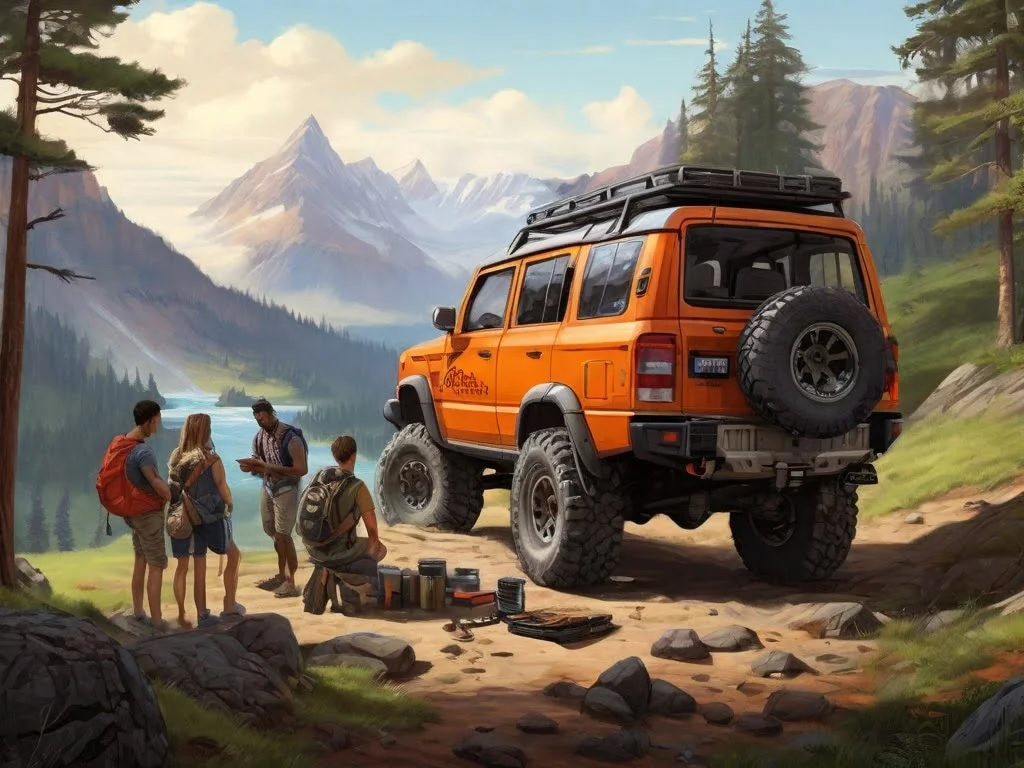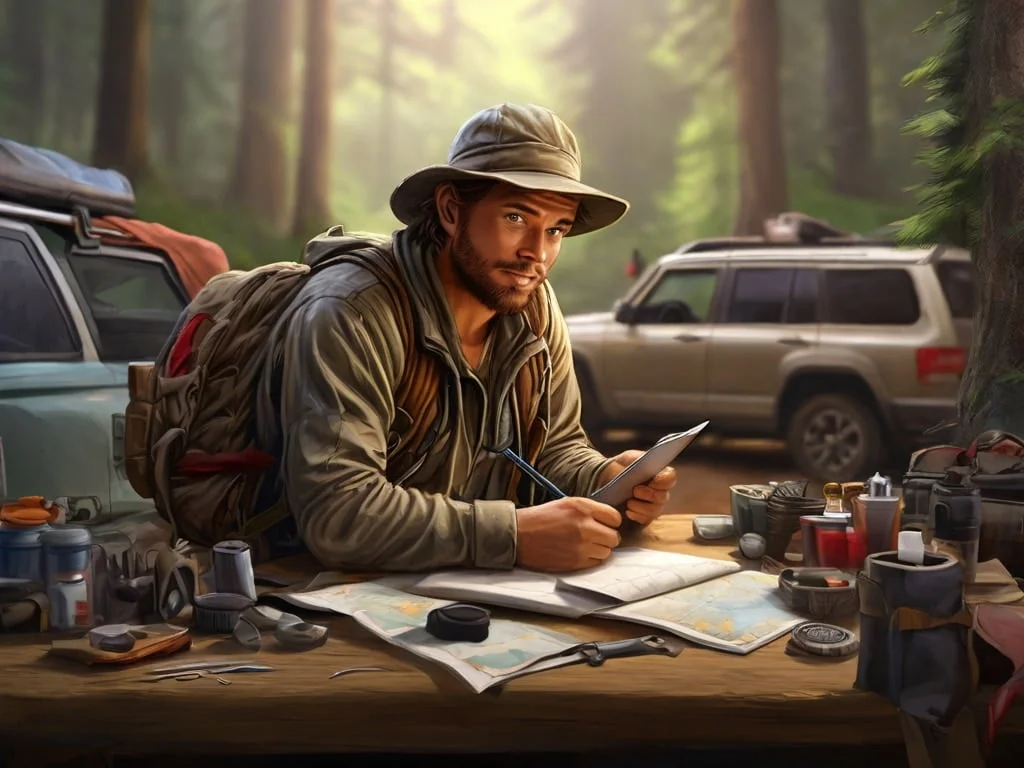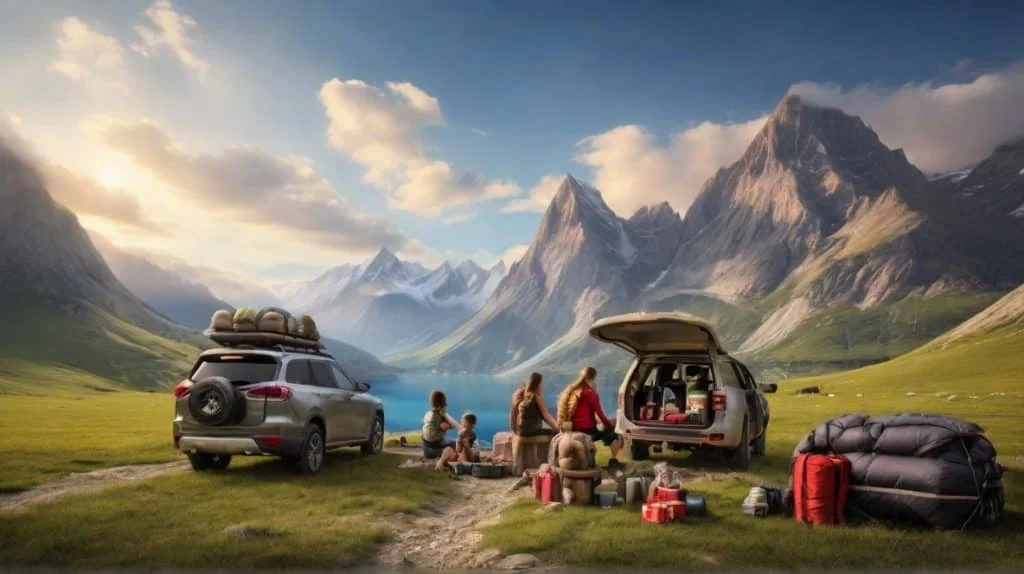Off-Road Trip Preparation involves careful vehicle inspection and essential gear packing. Know your route and ensure communication options are available.
Embarking on an off-road adventure requires meticulous planning to guarantee both safety and enjoyment. Before setting off, perform a comprehensive check of your vehicle, focusing on the tires, brakes, suspension, and fluid levels to prevent mechanical failures. It’s crucial to equip your vehicle with recovery gear, such as tow straps, a winch, and a shovel, which can be indispensable in unpredictable terrain.
Always pack a first-aid kit, additional food, water, and clothing to tackle any emergencies. Plan your route in advance and be mindful of weather conditions that could influence your journey. Securing a means of communication, whether it’s a satellite phone or a two-way radio, can be a lifesaver in areas where cell service is unreliable. Remember, a successful off-road trip lies in your readiness to face the rugged trails ahead.

Essentials For Every Off-road Adventure
Adrenaline, dirt, and the thrill of navigating through rugged landscapes make off-road adventures a favorite for many. But embarking on such a journey requires proper prep. Right from selecting a sturdy vehicle to charting your route with reliable navigation tools, and securing a means of communication, the success of your trip lies in the details. Gear up, as we list the essentials for every off-road adventure.
Choosing The Right Vehicle
The foundation of any successful off-road expedition is a capable vehicle. Look for features such as 4-wheel drive, high ground clearance, and strong suspension. Durability and reliability are key traits of an off-road vehicle. Consider models known for off-roading prowess like the Jeep Wrangler or Toyota Land Cruiser.
Packing Navigation Tools
Getting lost is not an option. Reliable navigation tools are vital. Invest in a GPS device designed for off-roading. Backup with traditional maps just in case. An exposure to elemental shifts could play havoc on purely digital devices, so paper maps can be lifesavers.
Communication Devices
Staying connected is critical, especially in remote areas. Don’t rely on cell phones alone. Satellite phones offer wider coverage. Also, pack a two-way radio (walkie-talkie) for local group communication. Remember to check if these devices are fully charged and operational before you leave.
- 4WD vehicle with off-road tires
- High-clearance suspension
- Skid plates for underbody protection
- All-terrain GPS and physical maps
- Charged satellite phones and two-way radios
Navigating Tough Terrain
Embarking on an off-road adventure thrills and challenges even the most skilled drivers.
Navigating tough terrain requires strategy, skill, and preparation.
Know your route, anticipate obstacles, and prep your vehicle.
Here’s how to tackle the unpredictable paths ahead with confidence.
Understanding Your Vehicle’s Capabilities
Unlock your vehicle’s potential by learning its limits.
Find out ground clearance, water fording depth, and angle capabilities.
Refer to the manual and practice on less challenging terrain first.
- Ground Clearance: Prevent undercarriage damage.
- Approach Angle: Tackle steep inclines with ease.
- Departure Angle: Navigate sharp descents safely.
Adjusting Tire Pressure For Different Surfaces
Tire pressure adjustment is key for different off-road surfaces.
Lower pressure increases the tire’s footprint and improves grip on soft surfaces.
Too low can unseat the tire or damage the wheel.
Use a reliable gauge to ensure correct pressure.
| Surface Type | Recommended Pressure |
|---|---|
| Sand | 15-20 PSI |
| Mud | 20-25 PSI |
| Rocks | 25-30 PSI |
Recovery Gear For Sticky Situations
Pack the right gear for self-recovery.
A winch can pull you out of a tight spot.
Traction mats offer grip in slippery conditions.
Don’t forget recovery straps and shackles for a helping hand.
- Winches: Electric or hydraulic for self-recovery.
- Traction Mats: Portable and essential for mud or snow.
- Recovery Straps: High-strength for towing or anchoring.
Essential Survival Supplies
Before hitting the dusty trails for an unforgettable off-road adventure, it’s crucial to pack essential survival supplies. Being prepared can turn a tough situation into a minor hiccup. This guide covers the crucial gear you need to stay safe, nourished, and comfortable during your journey.
First Aid Kit Must-haves
A comprehensive first aid kit is a non-negotiable element for any off-road trip. Here’s what your kit should include to handle potential injuries:
- Antiseptic wipes for cleaning wounds
- Bandages in various sizes for cuts and scrapes
- Gauze pads for larger wounds
- Adhesive tape to secure bandages
- Scissors and tweezers for cutting or removing debris
- Pain relievers like ibuprofen to manage discomfort
- Antihistamines for allergic reactions
- Burn ointment and aloe vera
- Emergency blanket for warmth or shock
Food And Water For The Trail
Staying hydrated and energized is vital. Make sure these essentials are on your list:
| Item | Quantity | Notes |
|---|---|---|
| Water bottles or hydration packs | At least 2 liters per person, per day | Consider a water filter; streams may not be safe. |
| Non-perishable snacks | Sufficient for trip duration | Include protein bars, nuts, and dried fruits. |
| Meals Ready-to-Eat (MREs) | One per person, per day | Quick and nutritious with no cooking required. |
Shelter And Clothing Considerations
The correct shelter and clothing can shield you from harsh conditions. Focus on these items:
- Weather-appropriate tent; check for durability and ease of assembly
- Sleeping bags rated for temperature
- Extra blankets for warmth
- Moisture-wicking layers keep you dry from sweat
- Waterproof outerwear protects against rain
- Hiking boots provide ankle support and grip
- Sun protection, such as hats and sunglasses
- Insulated clothing retains body heat in cold climates

Preparing Your Vehicle
Preparing your vehicle is a critical step before any off-road adventure. Taking the time to check and upgrade your vehicle can lead to a thrilling journey without unwanted interruptions. From routine checks to protective measures, each modification is a step towards a resilient ride across rugged terrains. Get ready to conquer the unbeaten path by ensuring your road warrior is in top condition.
Routine Maintenance Checks
Maintaining your vehicle ensures reliability off-road. Start with these key checks:
- Oil and Coolant Levels: Verify they’re full and clean for engine health.
- Brake Inspection: Confirm brakes are responsive and pads have no wear.
- Tire Condition: Check for appropriate tread depth and no damage.
- Battery Performance: Ensure it’s charged and securely mounted.
- Lights Functionality: Test all lights, including signals and high beams.
- Wiper Blades: Replace if they don’t clear the windshield effectively.
Upgrades For Off-roading
Equip your vehicle with these upgrades for an improved off-road experience:
| Upgrade | Benefits |
|---|---|
| Suspension Kit | Increased ground clearance and better handling |
| All-Terrain Tires | Optimal grip and durability on various surfaces |
| Skid Plates | Protects undercarriage from rough terrain impacts |
| Snorkel | Allows engine breathing in dust or water crossings |
| Winch | Assists in vehicle recovery from difficult spots |
Protecting Your Vehicle Underbody
The underbody of your vehicle is at risk when off-roading. Arm it with these measures:
- Skid Plates: Shield vital components like the oil pan and transmission.
- Rock Sliders: Defend the sides against rocks and debris.
- Differential Guards: Protect the differential from harsh impacts.
Remember, a well-prepared vehicle is pivotal for a successful off-road trip. Tending to routine maintenance, fitting upgrades, and fortifying the underbody are essentials that safeguard your journey. Embrace the adventure awaiting you and your robust, trail-ready machine!
Leave No Trace Principles
The ‘Leave No Trace Principles’ are essential for a responsible off-road trip. They protect our natural areas. These principles keep the great outdoors pristine for all.
Respecting Wildlife And Ecology
Wild animals are part of what makes off-roading exciting. Keep your distance to protect them. Avoid feeding wildlife—it’s harmful. Here’s how:
- Observe animals from afar. Binoculars can help see them up close.
- Keep noise to a minimum. Loud sounds scare wildlife away from their homes.
- Stay clear of nests and breeding sites. Disturbing these can harm animal families.
Managing Waste Responsibly
Pack it in, pack it out. This rule ensures campsites and trails stay clean. Managing your trash protects the environment.
- Use reusable containers. They reduce the waste you leave behind.
- Carry all trash. Bring a bag to take garbage home with you.
- Dispose of human waste properly. Use a portable toilet or dig a small hole.
Sticking To Established Trails
Stay on marked trails to prevent damaging unspoiled land. Trails are there to guide you and safeguard the habitat. Follow these tips:
- Drive only on routes marked for vehicles. This keeps the soil and plant life safe.
- Avoid creating new tracks. Stick to existing paths to reduce your impact.
- Don’t drive in waterways or wetlands. This can ruin delicate ecosystems.

Emergency Situations And Response
Preparing for emergencies is crucial for any off-road adventure. Accidents, natural hazards, and vehicle issues can happen. Be ready for any scenario. This preparation can make the difference between a minor inconvenience and a life-threatening situation. Let’s explore how to deal with emergencies when off-roading.
What To Do If You Get Stuck
Off-road trails can be tricky. Getting stuck is common. Don’t panic. Follow these steps:
- Evaluate the situation. Check for immediate dangers.
- Stay with your vehicle if possible. It’s easier to locate.
- Use your winch or traction mats. These tools help get you unstuck.
- If tools fail, call for help. Use a satellite phone or GPS device.
Navigating Natural Hazards
Nature is unpredictable. You may encounter mudslides, floods, or rock falls. Take these precautions to stay safe:
- Check weather reports before you depart. This step is crucial.
- Plan your route. Avoid areas prone to natural disasters.
- Drive slowly and carefully. React better to unexpected changes.
- If facing a hazard, do not attempt to cross. Turn back safely.
Off-road Recovery Services
Sometimes, self-recovery is not an option. Professional recovery services can help:
| Service Type | Description | When to Use |
|---|---|---|
| Winching Service | Uses a motorized axle and cable. | Stuck in mud or ditch. |
| Tow and Pull Service | Vehicle is towed away. | Vehicle can’t move on its own. |
| Flatbed Services | Car loaded onto a flatbed truck. | Severe vehicle damage. |
Keep a list of contacts for local off-road recovery services. Do this before heading out. Ensure your phone or communication device is charged. Stay connected in case of emergency.
Frequently Asked Questions On Off-road Trip Preparation
What Essentials Are Needed For An Off-road Trip?
For off-road trips, essential items include a full-size spare tire, recovery gear such as tow straps, a jack suitable for uneven terrain, navigation tools, sufficient water, first-aid kit, and non-perishable food. Don’t forget vehicle-specific spare parts.
How To Prepare My Vehicle For Off-road Adventures?
Inspect and upgrade your vehicle before an off-road adventure. Ensure it has sturdy off-road tires, sufficient ground clearance, a robust suspension system, and protective gear like skid plates. Additionally, regular maintenance checks are crucial to ensure reliability in challenging conditions.
What Are Common Off-road Driving Techniques?
Common off-road driving techniques include maintaining a low speed to navigate obstacles, using high ground clearance to advantage, engaging 4-wheel drive where necessary, and applying throttle gradually to prevent wheel spin. Always be aware of your vehicle’s approach, departure, and break-over angles.
How To Plan An Off-road Trip Route?
When planning an off-road trip route, consider the difficulty level of the trails, weather conditions, and your driving skill level. Utilize maps and GPS, consult local off-road communities for insights, and always have a backup plan. Prioritize routes with known waypoints for safe navigation.
Conclusion
Ready to embark on your off-road adventure? Ensure your journey is as thrilling as it is safe by following the essential prep steps we’ve outlined. Gear up, get informed, and set out on the ultimate off-the-beaten-path experience with confidence. Remember: proper preparation is the key to unlocking all the fun and excitement that awaits you beyond the pavement.
Safe travels and happy trails!


